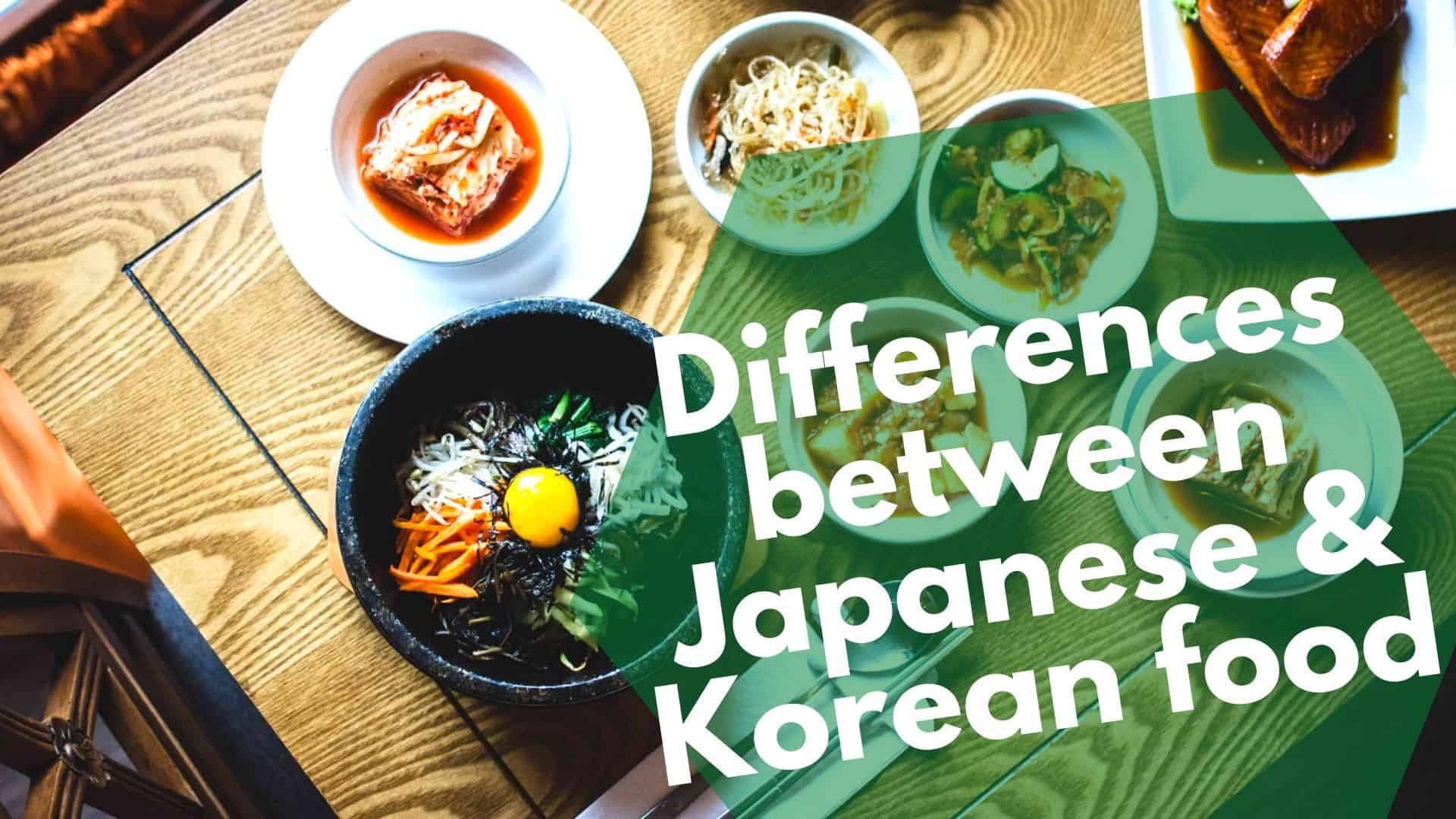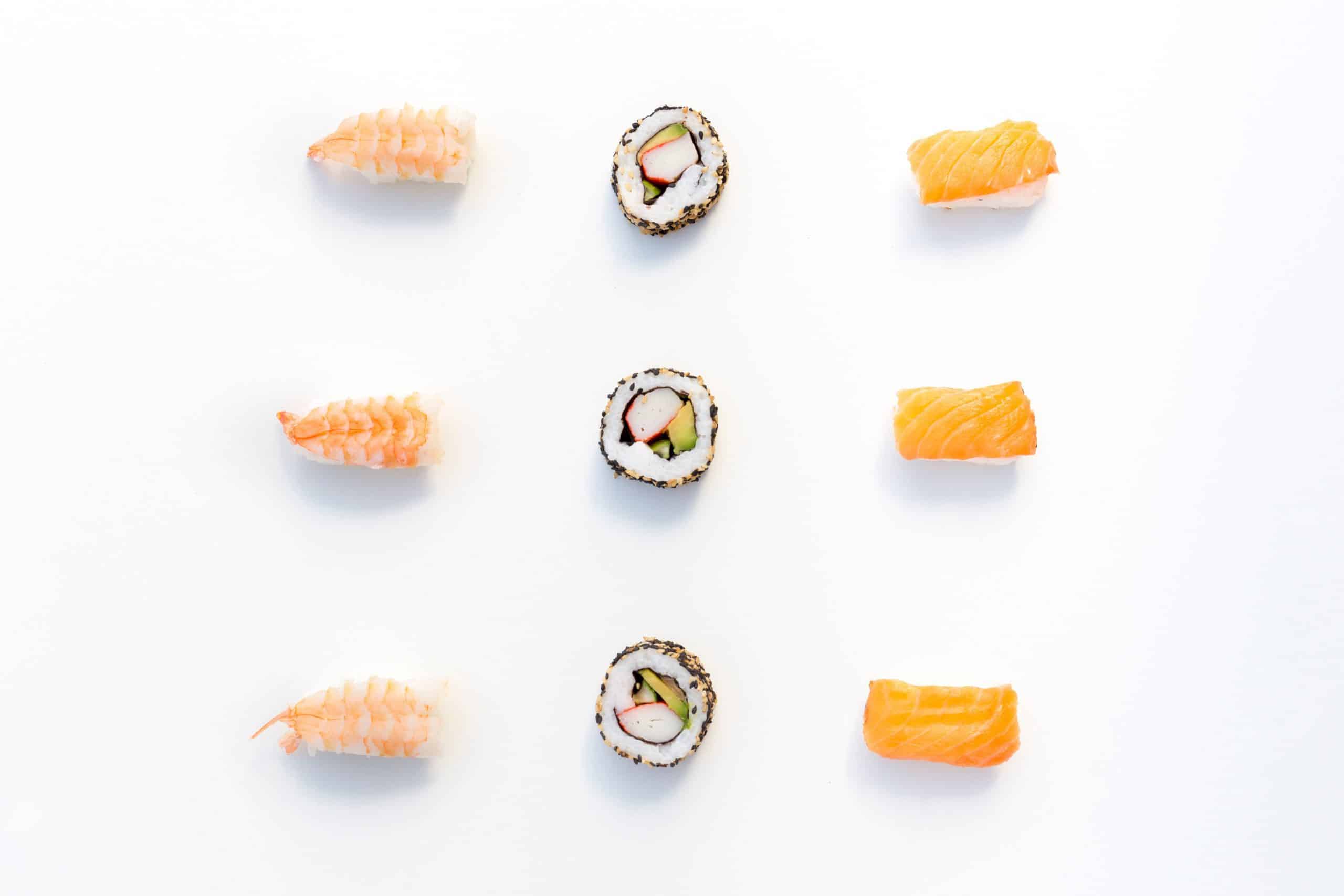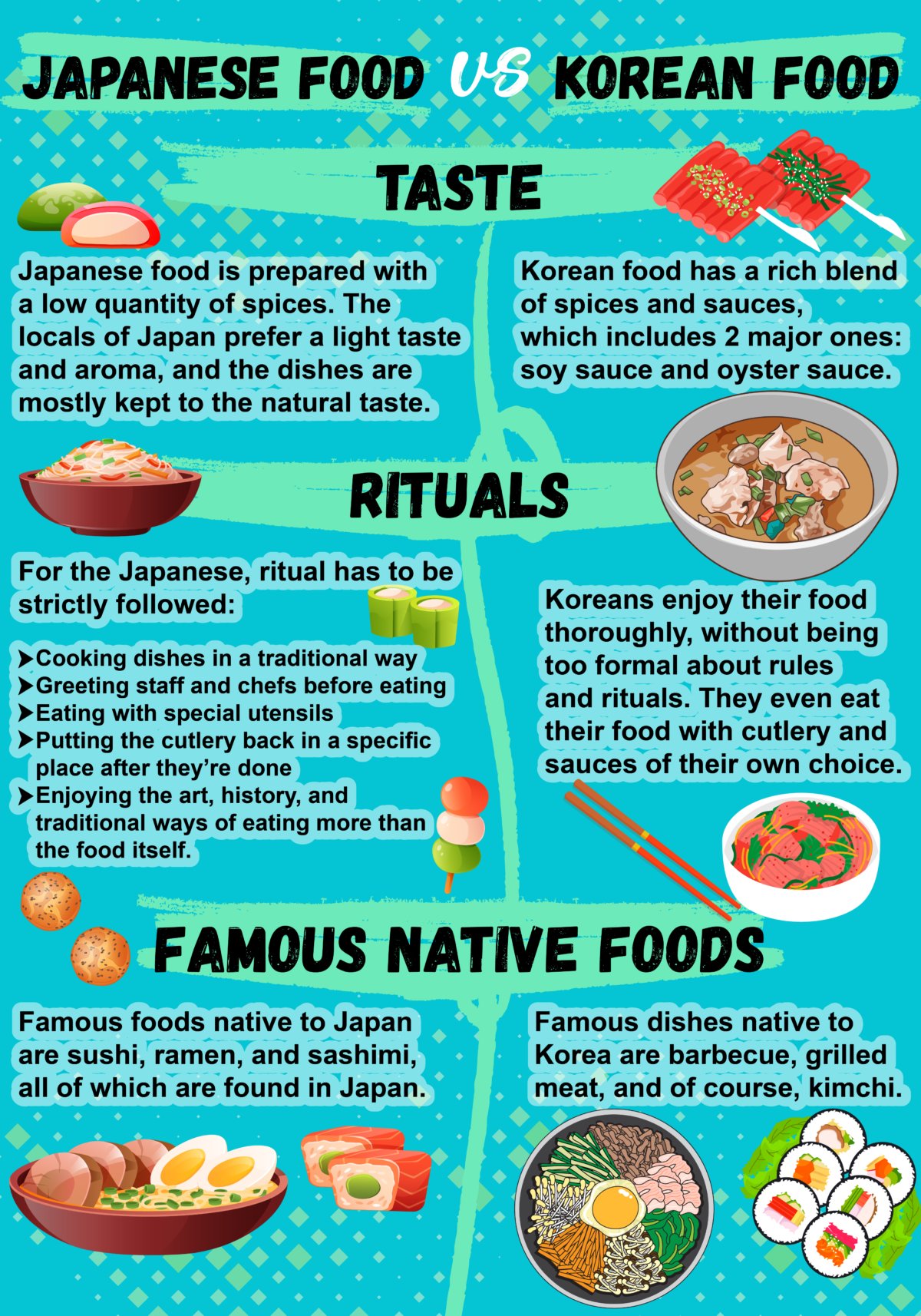Japanese vs Korean food | The differences between these cuisines
Asian dishes are liked all over the world because of their unique and healthy nature.
These delicious cuisines aren’t just preferred in Asian countries; nearly all other countries consume them in one way or another.
2 of the most popular cuisines in this regard are Japanese and Korean because they’re both considered healthy cuisines.

In this article, I want to discuss the main differences between these 2: What are the differences between Japanese vs Korean food?
In short, the main differences between Japanese and Korean food are the use of spices. While Korean food uses a lot of spices, Japanese food keeps things more natural with just a minimum of added flavors. Especially hot and spicy dishes are found in Korean cuisine, but not in Japanese cuisine.
Most importantly, people don’t really know the difference between these cuisines, so I went ahead and wrote up a detailed guide, which is this article!
*If you like Asian food, then I’ve made some great videos with recipes & ingredient explanations on YouTube you’d probably enjoy: Subscribe on YouTube

Check out our new cookbook
Bitemybun's family recipes with complete meal planner and recipe guide.
Try it out for free with Kindle Unlimited:
Read for freeIn this post we'll cover:
- 1 What makes Japanese cuisine original?
- 2 Fermentation process by the Japanese
- 3 What makes Korean cuisine remarkable?
- 4 Japanese & Korean cuisine
- 5 Which sauce and side dishes are preferred among the Japanese and Koreans?
- 6 The Differences between Japanese and Korean food
- 7 Both Japanese food and Korean food are delicious
What makes Japanese cuisine original?
Japanese cuisine encompasses the traditional and cultural foods of Japan, foods that have evolved through years of cultural and traditional changes.
It includes a variety of foods native to Japan, such as sushi, ramen, hibachi-style cooked dishes, gyudon, and many more.
Ramen is becoming so popular and I love the taste so much, I’ve written a complete article on all of the different ingredients you can add to the ramen broth to make it delicious and authentic.
The traditional and cultural food of Japan comprises several dishes that are inherited from their ancestors. And there are also quite a few more recent dishes introduced by contact with Americans.
Actually, Korea is quite the same way. They have many American influences and canned foods in their cuisine in more recently developed dishes, most often out of necessity after their occupation.
Although they use the same materials and ingredients for preparing food, their cooking methods, styles, and tools are quite different.
One major thing in which they stand out is their process of fermentation.
Fermentation process by the Japanese
Fermentation is the process of using microorganisms, yeast. and edible bacteria for the breakdown of food. It involves several steps through which the food can be preserved and made delicious!
Since the Asian climate is ideal for such processes, Japan has become one of the prime sellers of fermented products in the world.
Almost all of the Japanese diet contains something fermented. Because of this, a lot of original and authentic Japanese products came into being, such as miso paste, natto, vinegar, soybean, tempeh, etc.
Especially, the use of mild flavoring with vinegar is just so interesting to me. I have this post on sushi vinegar that you should check out to read more about the intricate flavors of sushi rice.
What makes Korean cuisine remarkable?
Korean cuisine is a traditional way of cooking following Korean culture and norms, using the culinary arts of Korea. The most common Korean food encompasses a wide variety of dishes, such as Korean barbeque, kimchi, rice, etc.
Korean food refers to food originating from Korea, through their traditional and cultural outlook, as well as their position in the world.
Since Korea is mostly surrounded by the ocean, it’s mostly popular for its seafood. A number of other dishes (like Korean barbecue) and special flavoring spices, sauces, and products (like kimchi) are also popular.
Japanese & Korean cuisine
Culinary dishes from East Asian countries have consistently been viewed as the absolute healthiest dishes available worldwide. Particularly, when we talk about Japanese and Korean cuisines, they’re known to fuse the most beneficial and healthiest ingredients and seasonings in their dishes.
Adding to a healthy eating regimen, both the Japanese and Koreans think about food as an important part of their way of life and it stretches out to the way in which they set up the dishes too.
A portion of their customs developed around food is very discrete and only taught within families or from chef to chef, while others are known by almost every resident.
Modern Japanese cuisine developed out of relative detachment from the outside world and afterward, an extended time of communication with and influence from all regions of the world. There was a dynamic exchange between Japan and Korea during this sheltered time. However, political and social trade appears to have been minimized now.
The 2 nations can both follow their culinary inheritance of certain dishes back to China and different other regions of Asia, such as rice, curries, soup, and noodles.
Although both of these cuisines have their own themes and cultural references, they have many similarities, such as the wrap and roll style of their dishes and certain other seasonings.
While Japan is celebrated for sushi and sashimi, Korea is known for its Korean BBQ. It’s a popular dish and is becoming a worldwide phenomenon as of late.
To appreciate these local delicacies as much as the natives do and to have a great time in Japanese and Korean restaurants (here or abroad), you should find out more about their food cultures and standards.
The Japanese have a long history of incorporating complex rituals and a tradition into their food preparation. They put a lot of emphasis on the significance of art and craftsmanship, and the sources of the food, and not simply just by tasting them.
For instance, it’s a common practice for the Japanese to talk to the individuals they’re eating with or to the chef and staff before eating as a token of thankfulness for their food.
The Japanese also fuse the tastes of soy sauce and umami in a lot of their dishes, and reaching the perfect umami taste is what a Japanese chef will strive for.
Which sauce and side dishes are preferred among the Japanese and Koreans?
Soy sauce (or “shoyu” in Japanese) holds a very important job in a wide range of cooking. The use of soy sauce can build the food’s fragrance, and more importantly, its flavor.
It adds a layer of sweetness and saltiness to the food and improves the taste of the food in the mouth through umami.
On the other hand, the Korean culinary style includes less complex customs than the Japanese. Yet at the same time, it has its very own exceptional styles.
A national Korean dish known as kimchi includes the process of fermentation to make chemicals that are helpful for processing, as well as a wide scope of probiotics, beta-carotene, and vitamin C.
These make for a new and fresh culinary experience!
The use of fermented food is predominant in other Korean dishes too.
Each will have a side dish known as a banchan that’s shared together with the table. It comprises cooked rice, soup, kimchi, and a serving of veggies that are fused with flavors and herbs.
Another example would be saengchae, which is a sort of Korean plate of mixed greens that blends uncooked vegetable flavors and chicken. It’s served as a side dish to a lot of popular Korean main courses, such as meat and noodles.
In addition to fermented dishes, Koreans also love to incorporate their specially made pastes. Gochujang paste, for instance, is pepper-based and includes a bit of chili with a trace of sugar blended in.
Or if you’re inclined towards a deeper flavor, maybe you can go for doenjang, which is made from soybeans and salt to upgrade the flavor of soup, vegetables, and rice.
Also read: these are all the differences between miso paste and doenjang
They really have a one-of-a-kind way to prepare their cuisine by coordinating their cultures, customs, traditions, and also the general experience of their guests with the healthy nutrients and hospitality that they offer.
The Differences between Japanese and Korean food
Food culture is a complete set of traditions and norms of cooking specifically related to a particular area, religion, or culture, each with its own nuances.
These are the differences between Japanese and Korean cuisine.
Taste
Korean food has a rich blend of spices and sauces, which includes 2 major ones: soy sauce and oyster sauce. These spices and sauces are a part of almost every Korean dish and they provide a savory flavor to every dish.
On the other hand, Japanese food is prepared with a low quantity of spices. The locals of Japan prefer a light taste and aroma, and the dishes are mostly kept to the natural taste of the main ingredients.
Most notably, the Japanese don’t use that many peppers in their food, whereas Koreans often eat their foods quite spicy.
Rituals
Koreans enjoy their food thoroughly, without being too formal about rules and rituals. They even eat their food with cutlery and sauces of their own choice, whereas in Japan, the ritual has to be strictly followed.
Here are some rituals:
- Cooking dishes in a particular way, as is prescribed by tradition
- Greeting staff and chefs before eating
- Eating with special utensils (such as chopsticks) in the correct manner
- Putting the cutlery back in a specific place after they’re done
They enjoy the art, history, and traditional ways of eating more than the food itself.
Famous native foods
Famous foods native to Japan are sushi, ramen, and sashimi, all of which are found in Japan, as well as all over the world. But they’re originally from Japan and are eaten according to Japanese culture.
Famous dishes native to Korea are barbecue, grilled meat, and of course, kimchi (which isn’t actually a dish in itself but a side dish, or a means to add flavor to other dishes).
The preparation
Another difference between the 2 cuisines is the method of preparing food.
In Korea, meat and other raw foods are heavily marinated with spices and sauces to flavor the dish before the food is actually cooked.
While in Japan, raw food is most often cooked. It’s done with as little seasonings as possible and the taste is added after the food is cooked completely.
Sushi
Probably the most prominent difference between Korean sushi and its Japanese partner is the rejection of wasabi.
Instead, gochujang, a spicy, fermented Korean red pepper sauce is very often used as an alternative. It conveys a comparable heat without the tingling sensation of wasabi.
Korean sushi’s fundamental components of fresh fish and expertly cooked rice line up with the Japanese style of making sushi.
Truth be told, numerous Korean sushi chefs are trained by Japanese chefs who highlight the significance of flawless preparation and their noble arrangements. These standards apply to both Korean and Japanese sushi.
What makes them distinctive is the manner in which Korean chefs expand upon their Japanese teachings, by infusing their dishes with seasonings, flavors, and cooking techniques from their own country’s culinary collection.
Both Japanese food and Korean food are delicious

If you liked the information in this post explaining the differences between Korean and Japanese food, please also read my post on the differences between Japanese and Chinese food with an in-depth guide of the 2!
Check out our new cookbook
Bitemybun's family recipes with complete meal planner and recipe guide.
Try it out for free with Kindle Unlimited:
Read for freeJoost Nusselder, the founder of Bite My Bun is a content marketer, dad and loves trying out new food with Japanese food at the heart of his passion, and together with his team he's been creating in-depth blog articles since 2016 to help loyal readers with recipes and cooking tips.
